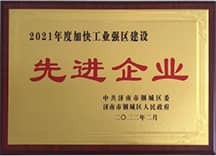Thickening and Thixotropy of Cellulose Ethers
Thickening and thixotropy of cellulose ether: The second function of cellulose ether - thickening effect depends on: the degree of polymerization of cellulose ether, solution concentration, shear rate, temperature and other conditions. The gelling properties of the solution are unique to alkyl cellulose and its modified derivatives. The gelation properties are related to the degree of substitution, solution concentration and additives. For hydroxyalkyl-modified derivatives, the gel properties are also related to the degree of modification of the hydroxyalkyl group. For MC and HPMC with low solution concentration, 10%-15% concentration solution can be prepared, medium viscosity MC and HPMC can be prepared with 5%-10% solution, and high viscosity MC and HPMC can only be prepared with 2%-3% solution, while Usually the viscosity grade of cellulose ether is also graded by 1%-2% solution.
High molecular weight cellulose ether has high thickening efficiency. In the same concentration solution, different molecular weight polymers have different viscosities. The viscosity and molecular weight can be expressed as follows, [η]=2.92×10-2(DPn) 0.905, DPn is the average polymerization high degree. The target viscosity can be achieved only when the low molecular weight cellulose ether is added in a large amount. Its viscosity has little dependence on shear rate, high viscosity reaches the target viscosity, and the required addition amount is small, and the viscosity is determined by the thickening efficiency. Therefore, to achieve a certain consistency, a certain amount of cellulose ether (the concentration of the solution) and the viscosity of the solution must be guaranteed. The gelation temperature of the solution also decreased linearly with the increase of the concentration of the solution, and gelled at room temperature after reaching a certain concentration. The gelation concentration of HPMC at room temperature is higher.
Consistency can also be adjusted by selection of particle size and selection of cellulose ethers of different degrees of modification. The so-called modification is to introduce a hydroxyalkyl group with a certain degree of substitution on the skeleton structure of MC. By changing the relative substitution values of the two substituents, that is, the DS and ms relative substitution values of the methoxy and hydroxyalkyl groups that we often say. The requirements for various properties of cellulose ethers are obtained by changing the relative substitution values of the two substituents.
The relationship between consistency and modification: the addition of cellulose ether affects the water consumption of the mortar, changing the water-binder ratio of water and cement is the thickening effect. The higher the dosage, the greater the water consumption.
Cellulose ethers used in powdered building materials must dissolve rapidly in cold water and provide the system with a suitable consistency. If given a certain shear rate, it is still flocculent and colloidal block, which is an unqualified or poor quality product.
There is also a good linear relationship between the consistency of cement paste and the content of cellulose ether. Cellulose ether can greatly increase the viscosity of mortar. The larger the content, the more obvious the effect. High viscosity aqueous solution of cellulose ether has high thixotropy, which is also a major characteristic of cellulose ether. Aqueous solutions of MC-based polymers generally have pseudoplastic, non-thixotropic flow properties below their gel temperature, but Newtonian flow properties at low shear rates. Pseudoplasticity increases with the increase of molecular weight or concentration of cellulose ether, regardless of substituent type and degree of substitution. Therefore, cellulose ethers of the same viscosity grade, whether it is MC, HPMC or HEMC, always exhibit the same rheological properties as long as the concentration and temperature are kept constant.
Structural gels are formed when the temperature is increased, and high thixotropic flow occurs. Cellulose ethers with high concentrations and low viscosity exhibit thixotropy even below the gel temperature. This property is of great benefit to the construction of building mortar to adjust its leveling and sag. It should be noted here that the higher the viscosity of the cellulose ether, the better the water retention, but the higher the viscosity, the higher the relative molecular weight of the cellulose ether, and the corresponding decrease in its solubility, which has a negative impact on the mortar concentration and construction performance. The higher the viscosity, the more obvious the thickening effect of the mortar, but it is not completely proportional. Some medium and low viscosity, but modified cellulose ethers have more excellent performance in improving the structural strength of wet mortar. With the increase of viscosity, the water retention of cellulose ethers increases.






